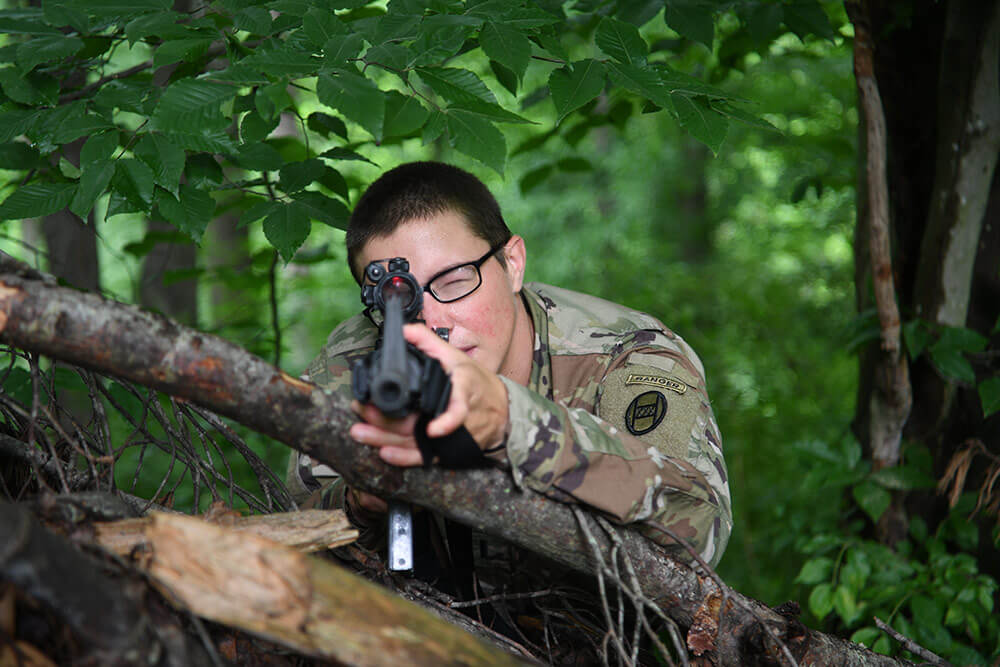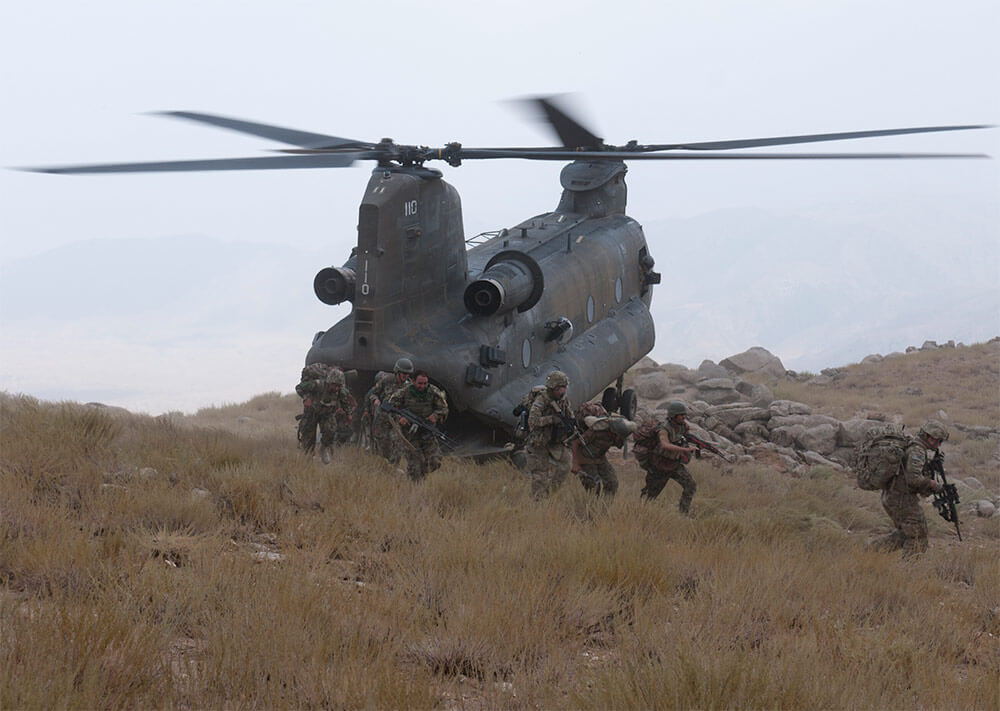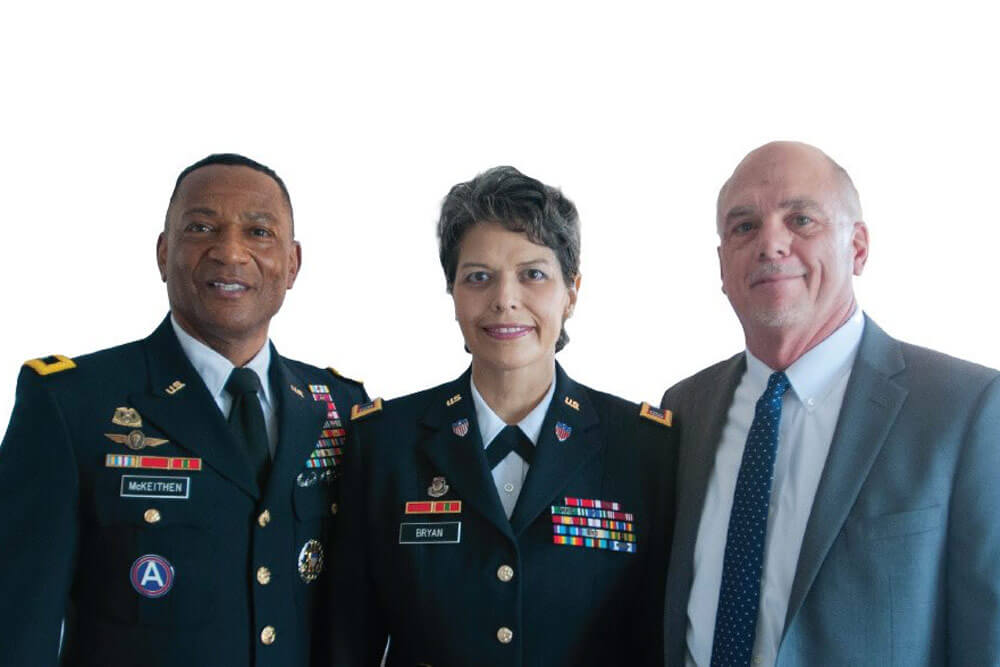New England CERF-P Units Offer Hope in Face of Untold Disaster
Chemical, biological, radiological, nuclear and explosive (CBRNE) Enhanced Response Force Package (CERF-P) units represent a substantive force for good – and more importantly, hope – for any American community that has become victim to a biological outbreak or chemical/nuclear threat. The men and women of the National Guard assigned to these units are tasked with being at the scene of an incident within six hours of its occurrence.
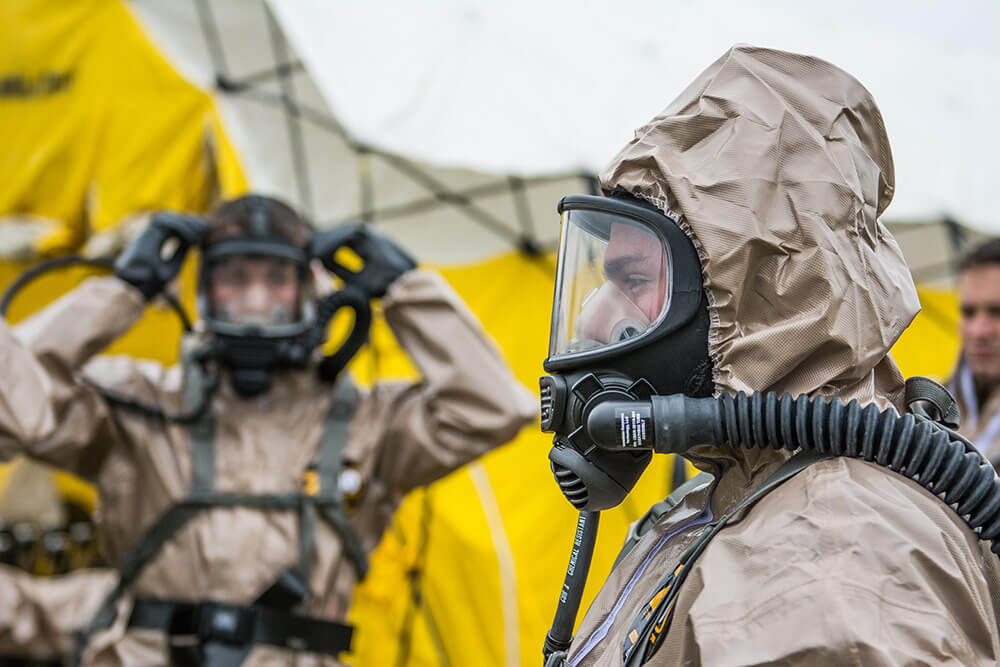
The New England CERF-P is just one example of these combined Army and Air Guard units that conduct everything from decontaminating victims (up to 100 per hour), to extracting victims from collapsed buildings, to providing victims with life-saving medical care.
“CERF-P is not an MOS [military occupational specialty], it’s an additional duty,” said LTC Mark C. Stevens, commander of the 521st Troop Command Battalion, Maine Army National Guard. “[Our normal jobs] take the backburner at times.”
With command of the 521st Troop Command Battalion, LTC Stevens also inherits command of the New England CERF-P. The New England CERF-P is an all-volunteer force, made up of 203 Soldiers from Rhode Island, Maine and New Hampshire. For many of the CERF-P unit members, including the commander, it can be tricky to balance CERF-P duties with the responsibilities of command and the normal duties associated with each Soldier’s MOS. This is especially true since most of the CERF-P Soldiers are traditional drilling Soldiers and are attempting to complete the requirements of both roles on limited hours.
“This is my part-time job to my part-time job,” LTC Stevens quipped regarding the CERF-P.
As challenging as its prioritization may be, the role of the CERF-P unit is a critical job, and these New England Soldiers take it very seriously.
“I’m glad we’ve never had to use [the CERF-P unit] because if we used it, that means something really bad happened and people died,” reflected 1SG Felix Marinelli with the 861st Engineer Company, Rhode Island National Guard and New England CERF-P member.
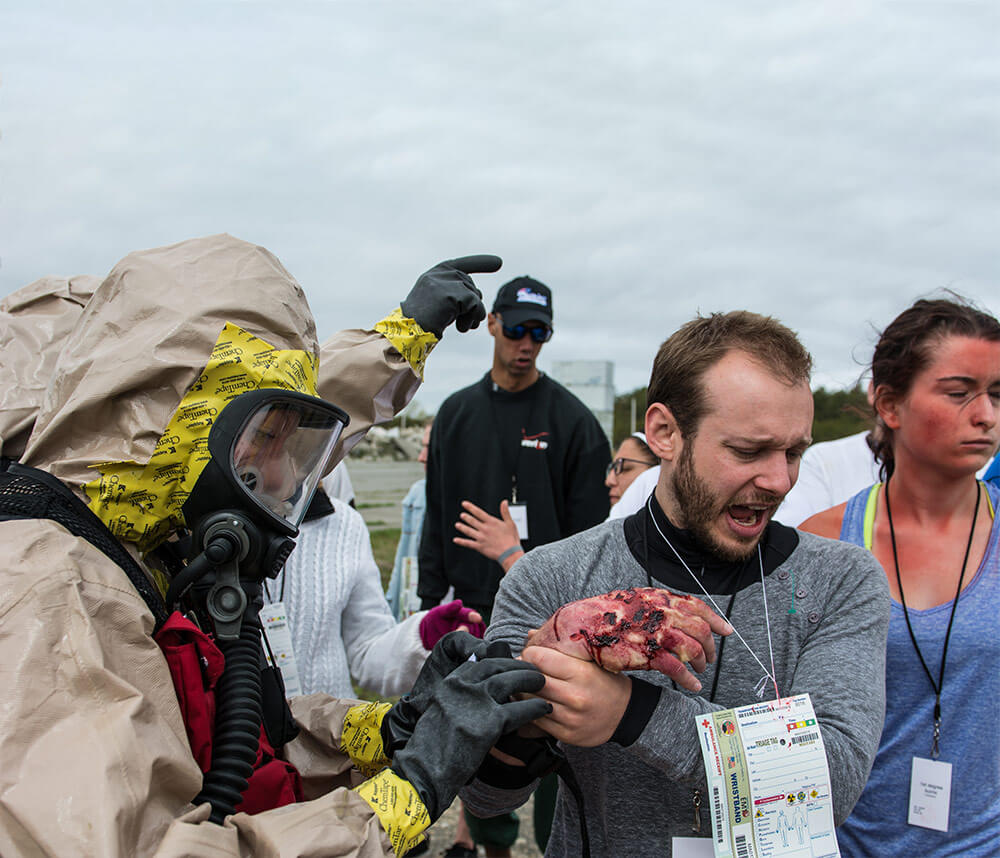
1SG Marinelli went on to express his enthusiasm for being a part of the Search and Extraction (S&E) element of the New England CERF-P. If an incident were to occur, he and his fellow Soldiers would be there – ready to serve.
“The reason I’m [on the team] is because we actually go in where the rubber meets the road,” he said. “We’re saving people. We’re getting victims out of the situation. You’re helping people downrange. It’s one of the most visible elements of CERF-P, because you’re right down with the folks.”
Unique to most military units, a deliberate practice of the New England CERF-P is to let the most experienced team member lead a mission, regardless of rank.

“If we have an E-7 and a private out there, if the private knows more in, say ropes, we would have that private lead that team,” noted SGT James Graves with the 861st. “It’s more based on experience and not rank-structured. I think it works well. Everybody knows [the policy], so you’re not going to have that E-7 or E-6 barking at [the lower ranking Soldiers].”
This past May, the New England CERF-P’s readiness was tested during a training and certification exercise held at Joint Base Cape Cod, Massachusetts. The unit was evaluated by the Joint Interagency Training and Education Center (JITEC) based out of West Virginia. JITEC is the National Guard Bureau lead for CBRNE and Critical Infrastructure Protection training. Utilizing a cadre of military and civilian subject matter experts for homeland defense and civil support activities, the JITEC is an active National Guard unit that supports National Guard training and education.
To pass the evaluation, the Soldiers had to successfully travel to the disaster site, set up their teams, then find, recover, transport, decontaminate and medically treat victims played by local, civilian role players.
CERF-P validation takes place every three years. The unit trained heavily to prepare for this year’s validation, prepping for approximately six months prior to the event.
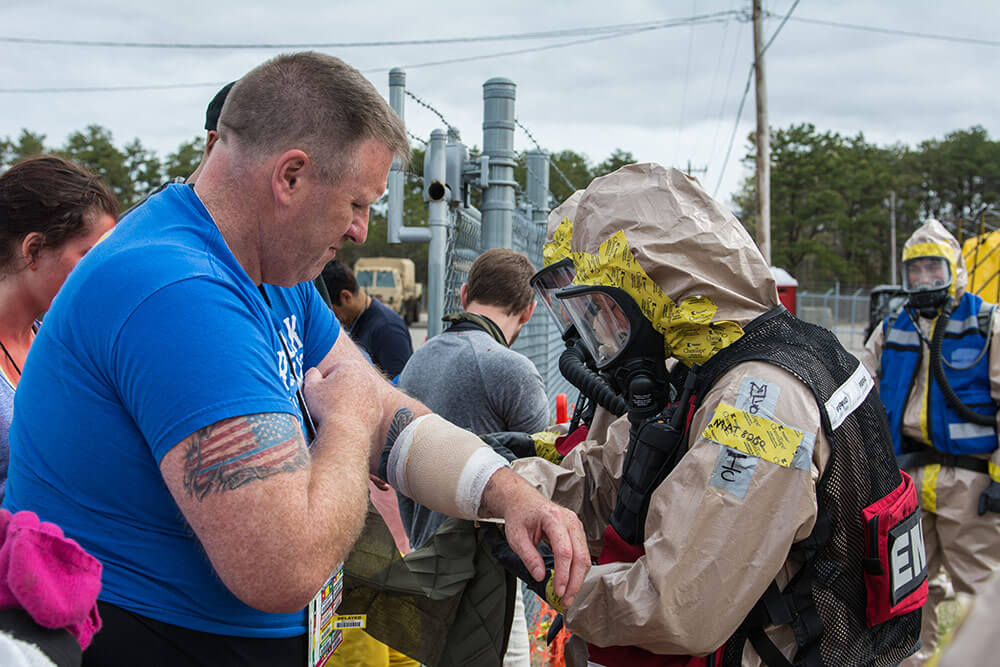
“They were testing us on our proficiency with a factor of time,” said MAJ Michael Gary with 521st Troop Command, Maine Army National Guard. MAJ Gary is the executive officer of the 521st. He is also the deputy commander of the New England CERF-P.
The scenario for the validation exercise centered on a fictional nuclear device exploding in Rhode Island. In part, the incident briefing for the exercise read:
On May 14th, 2018 at 0800, a major explosion occurred in Providence, RI, followed by secondary explosions, collapsed structures, fires and numerous vehicular accidents. Source of the detonation appears to be a 10kT nuclear device detonated at ground level within the city of Providence, RI. Wind is out of the West at about 10 mph and has created a fallout plume that stretches east all the way to Cape Cod. A shelter-in-place order has been issued. Casualty shelters and treatment centers outside the light damage zone (est. 3-mile radius from blast epicenter) are being established. Early projections estimate over 25,000 fatalities and over 34,000 injuries.
Despite the bleak situation, the New England CERF-P was ready for the job at hand. The unit is broken up into six elements to allocate resources and designate tasks: the 16-person command and control (C2) element, led by Maine’s 521st Troop Command Battalion; the six-person communications element, made up of Air Guard personnel; the 50-person search and extraction element, made up of Army National Guard Soldiers; the 75-person decontamination element, also made up of Army National Guard Soldiers; the 45-person medical element, made up of Airmen; and the 11-person Fatality Search and Recovery Team element.
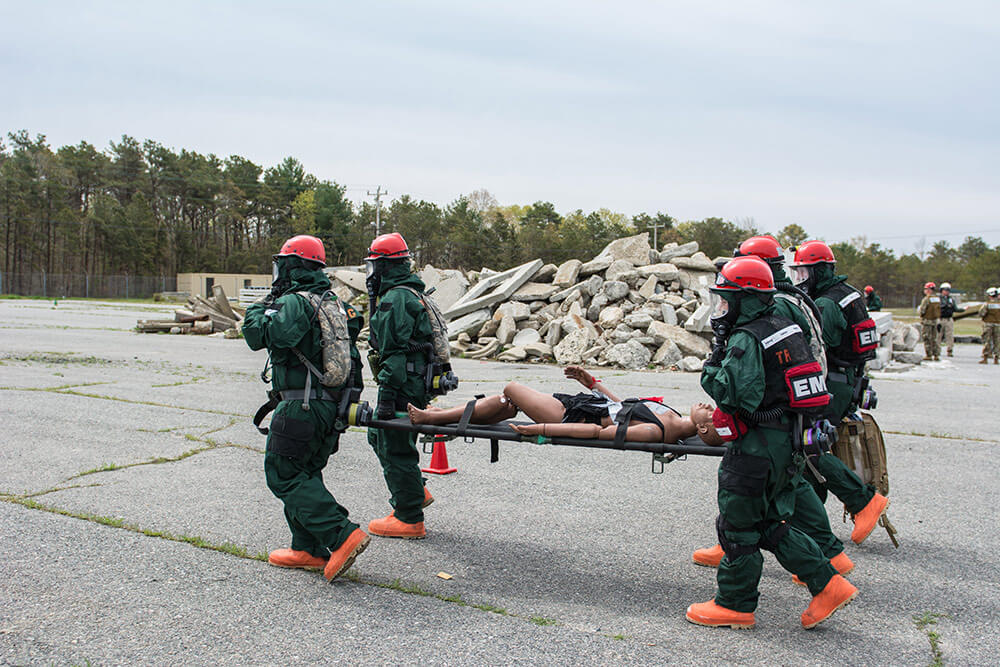
Before going downrange, the search and extraction team talks to the C2 and partnering first responder agencies to obtain information regarding the specifics of the incident.
“There are other military teams out there to tell us what the threat is – whether it’s chemical, nuclear or biological,” 1SG Marinelli said. “We suit up accordingly based on that information.”
MAJ Gary expressed the importance of joint training not only with other U.S. military forces, but also with local first responders. “When you get together with Air, Army and different units, you can unify to solve a problem,” he said. “It also brings us closer to the first responder community; one thing we always hear from our evaluators is how quick we are to come together, unify, problem-solve and make connections.”
For the validation exercise, one of the search and extraction tasks was to rescue a victim from the bottom of a 50-foot elevator shaft. The shaft was simulated by stacking CONEX shipping containers on top of one another. To complicate matters, Soldiers began their work in total darkness.
“Basically, in full chemical suits and chemical gear, [Soldiers are] walking up a flight of stairs with a 60-pound backpack full of their ropes, gear and their tripod,” explained SSG Brian Wheeler, a platoon sergeant for Rhode Island’s 861st and noncommissioned officer-in-charge for the search and extraction element.
SSG Wheeler went on to explain how the search and extraction Soldiers then prep a rope line to send team members down the shaft on a harness.
“We’ll send a medic and then another person down. The medic will perform first aid while the other guy helps package the patient. They’ve got to harness the patient, and then do it all over again going up [themselves]. The guys on the top end are pulling the rope system.”
A major challenge for the search and extraction team, and for all CERF-P Soldiers, is the perishable nature of the skills required to complete their missions. Unless the core tasks are practiced repeatedly, the ability to perform them with efficiency will quickly begin to decline.
“Rope training is one of the most perishable skills we have,” said SSG Wheeler. “There’s never enough training that we can do for ropes.”
1SG Marinelli agreed. “For the amount of time you have to train with those things, it’s very sketchy,” he said. “But the guys pulled through. We had classes right before [going to validation].”
By all accounts, this year’s validation for the New England CERF-P was a success. In fact, the New England Soldiers reported their performance as exceptional.
“We knew we were going to knock it out of the park,” MAJ Gary noted. “We did really well. The evaluators were very impressed with the way we performed.”
In addition to the JITEC evaluators being impressed, the Soldiers of New England’s CERF-P were happy with the effort put into their performance.
“I enjoy it,” said CW2 Eric Martins, with the 521st Troop Command. “I think most of the guys do because it’s a big buildup. There’s lots that goes into it – months of planning ahead of time, a lot of behind-the-scenes stuff just to get us there. It keeps us really busy. Then when you get there, and you see it all come together and it goes off smoothly, it’s really satisfying.”
By Staff Writer Matthew Liptak
